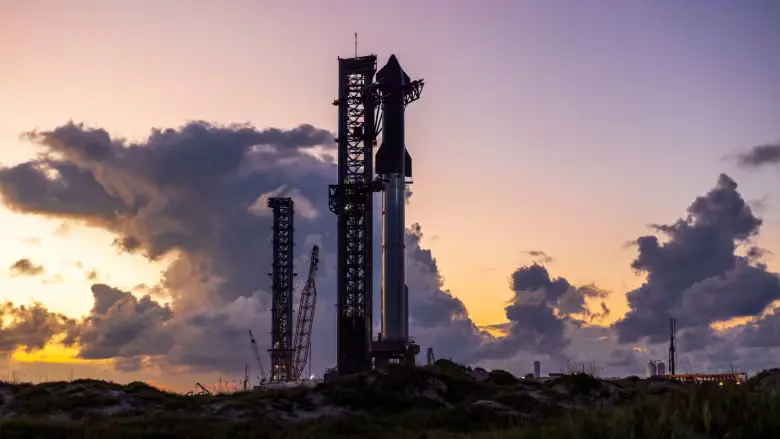Launch Scheduled as Early as Sunday, FAA Says Safety and Environmental Standards Met
The US Federal Aviation Administration (FAA) granted SpaceX a launch license for its Starship 5 flight, scheduled for as early as Sunday.
The FAA confirmed that SpaceX had met all necessary safety, environmental, and other licensing requirements for the suborbital test flight.
The approval comes earlier than expected, as last month the FAA indicated it would not rule on the launch before late November. However, on Monday, SpaceX announced on social media that the test flight could take place as early as Sunday.
The FAA later stated it had reviewed new information provided by SpaceX, without mentioning the original November timeline.
Previous setbacks and grounding
SpaceX’s operations had been grounded following the launch of its Crew-9 mission to the International Space Station on September 29, after the second stage missed its designated splashdown zone.
While the company received special approval for NASA’s Hera mission launch last week, future launches have remained under close regulatory scrutiny.
NASA is also awaiting the launch of its Europa Clipper mission to Jupiter’s moon, initially scheduled for Thursday atop a SpaceX Falcon Heavy. This launch was postponed due to Hurricane Milton and could also occur as early as Sunday.
Upgraded Starship and first booster catch attempt
The upcoming Integrated Flight Test 5 (IFT5) will showcase several significant upgrades following the last test in June (IFT4), which featured a dramatic atmospheric re-entry with plasma enveloping the spacecraft. The previous test saw heat damage to one of the ship’s flaps, but the vessel successfully “landed” in the Indian Ocean.
SpaceX has since upgraded the heat shield and introduced additional layers to better protect the spacecraft during re-entry. However, the highlight of IFT5 will be the attempt to catch the Super Heavy booster mid-flight using “chopsticks” at the launch site in Boca Chica, Texas.
This maneuver, the first of its kind, will occur approximately six minutes and 50 seconds after launch, accompanied by a sonic boom.
Jordan Bimm, a space historian from the University of Chicago, called this moment “the one to watch,” adding that it will determine whether IFT5 can be considered a developmental success. Should the catch attempt succeed, it could pave the way for SpaceX to pursue full-orbit launches in the near future, advancing beyond the suborbital flights conducted thus far.
SpaceX and FAA tensions continue
SpaceX CEO Elon Musk’s ongoing dispute with the FAA has escalated, with Musk criticising the regulator’s recent $633,000 fine over SpaceX launch violations and accusing the FAA of delaying IFT5 unnecessarily. Musk has threatened legal action and called for the resignation of FAA Administrator Mike Whitaker.
The FAA had cited concerns over the expected sonic boom from IFT5, citing potential impacts on wildlife and nearby populations. At a congressional hearing last month, Whitaker defended the delay, noting SpaceX had failed to disclose certain legal violations in Texas, which was a requirement for obtaining a permit. SpaceX has disputed those claims.
Future of Starship
This will be the fifth launch of SpaceX’s 37-storey Starship, and the success of IFT5 will be critical to the program’s progress. Musk envisions Starship as a vessel that will one day ferry humans to Mars, but in the near term, it is slated to transport astronauts to the lunar surface as part of NASA’s Artemis III mission, scheduled for 2026.
Space historian Jordan Bimm noted that IFT4 provided crucial momentum for Starship, and IFT5 will serve as a key test to see whether that progress continues. “I will be looking to see if IFT5 is able to build on this momentum or if there is any backsliding or failure to achieve this new set of goals,” Bimm remarked.















